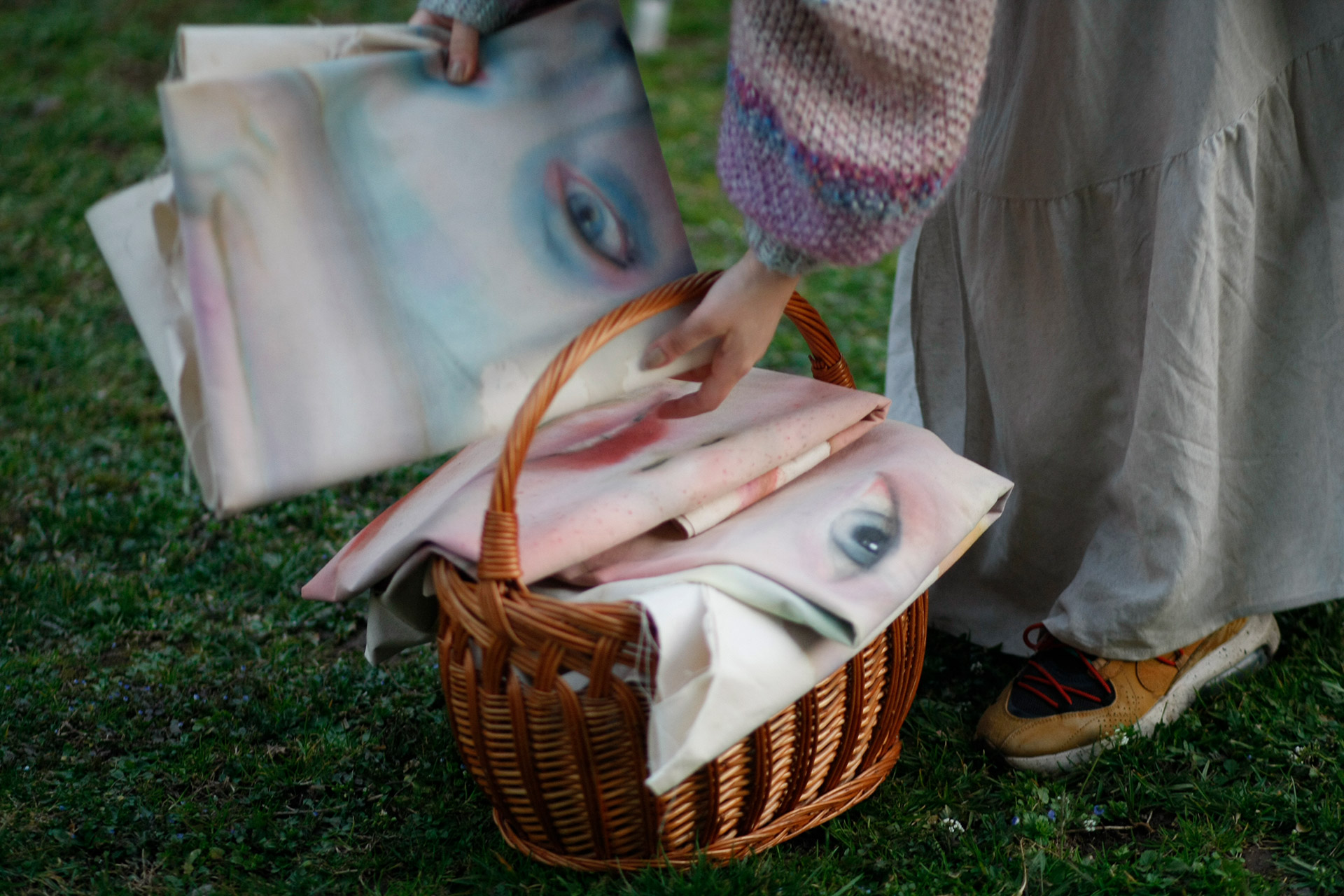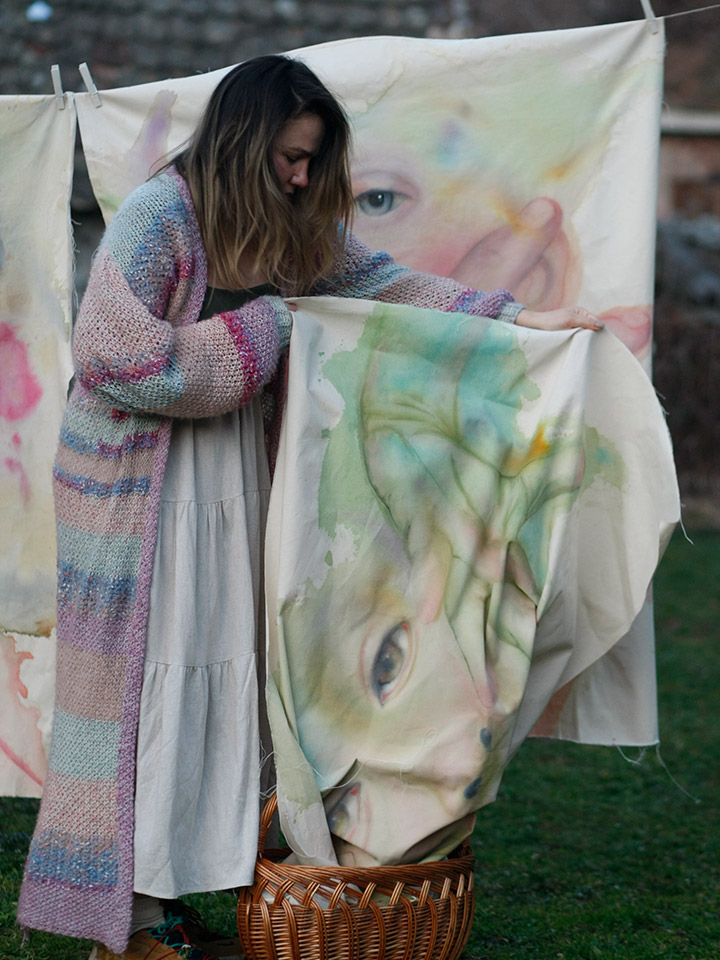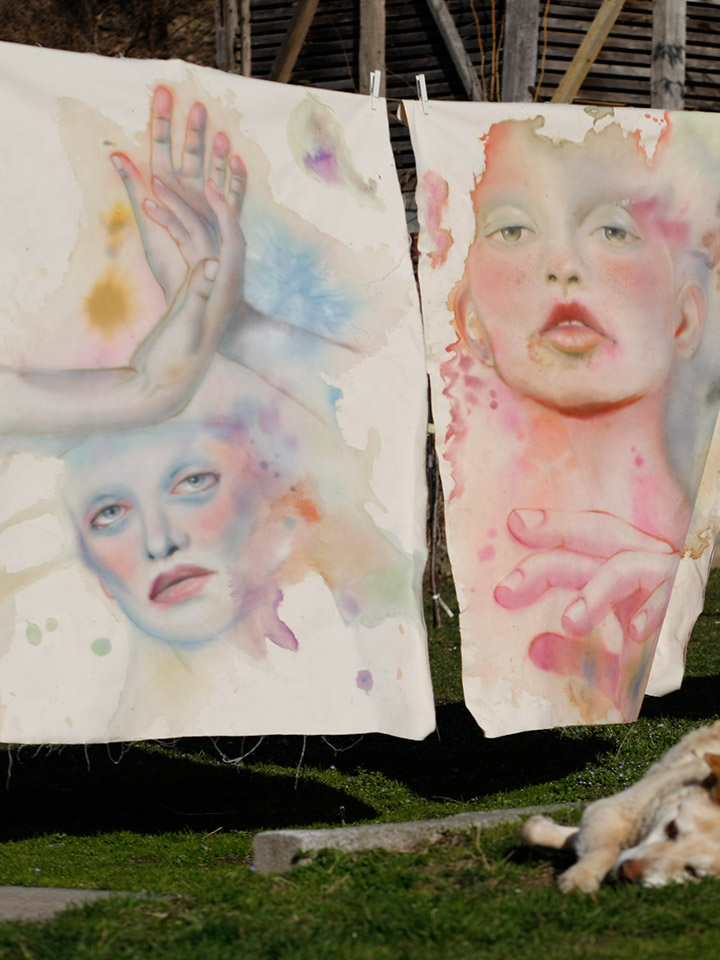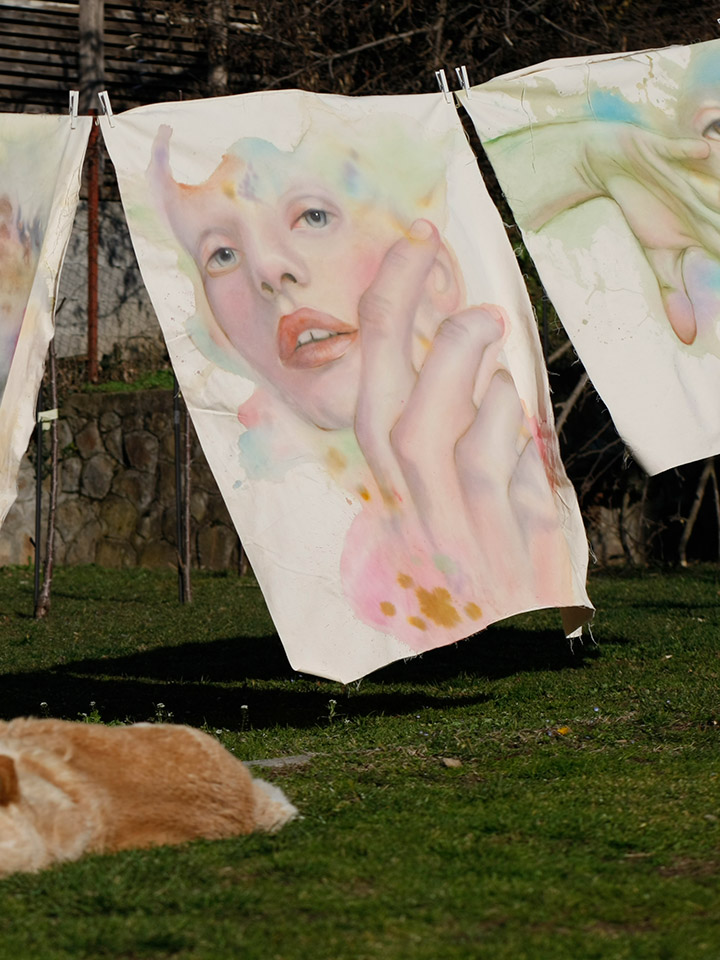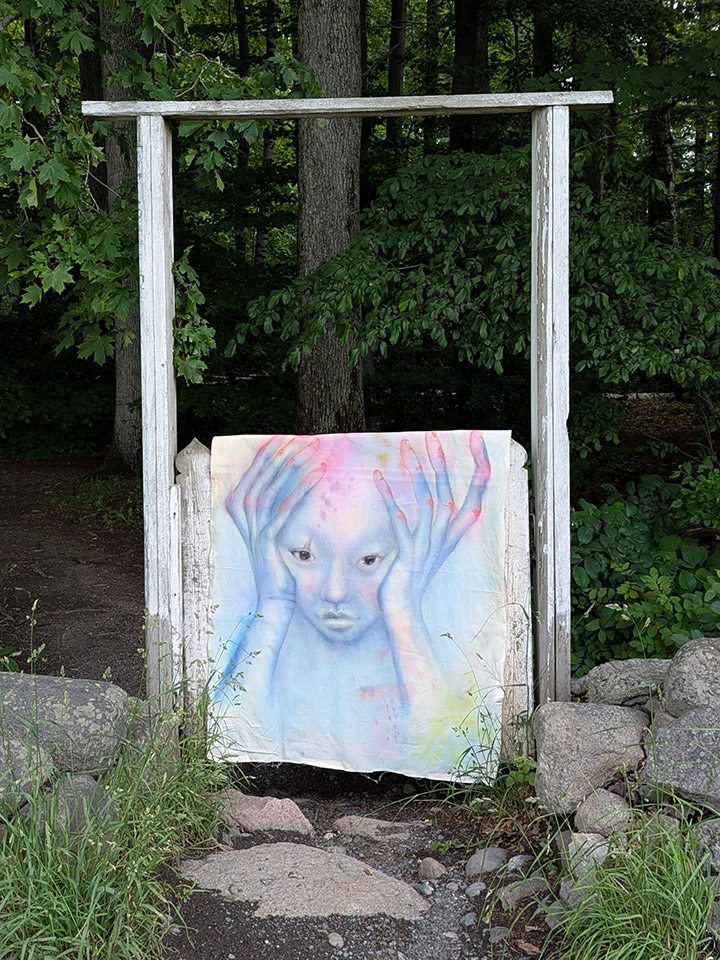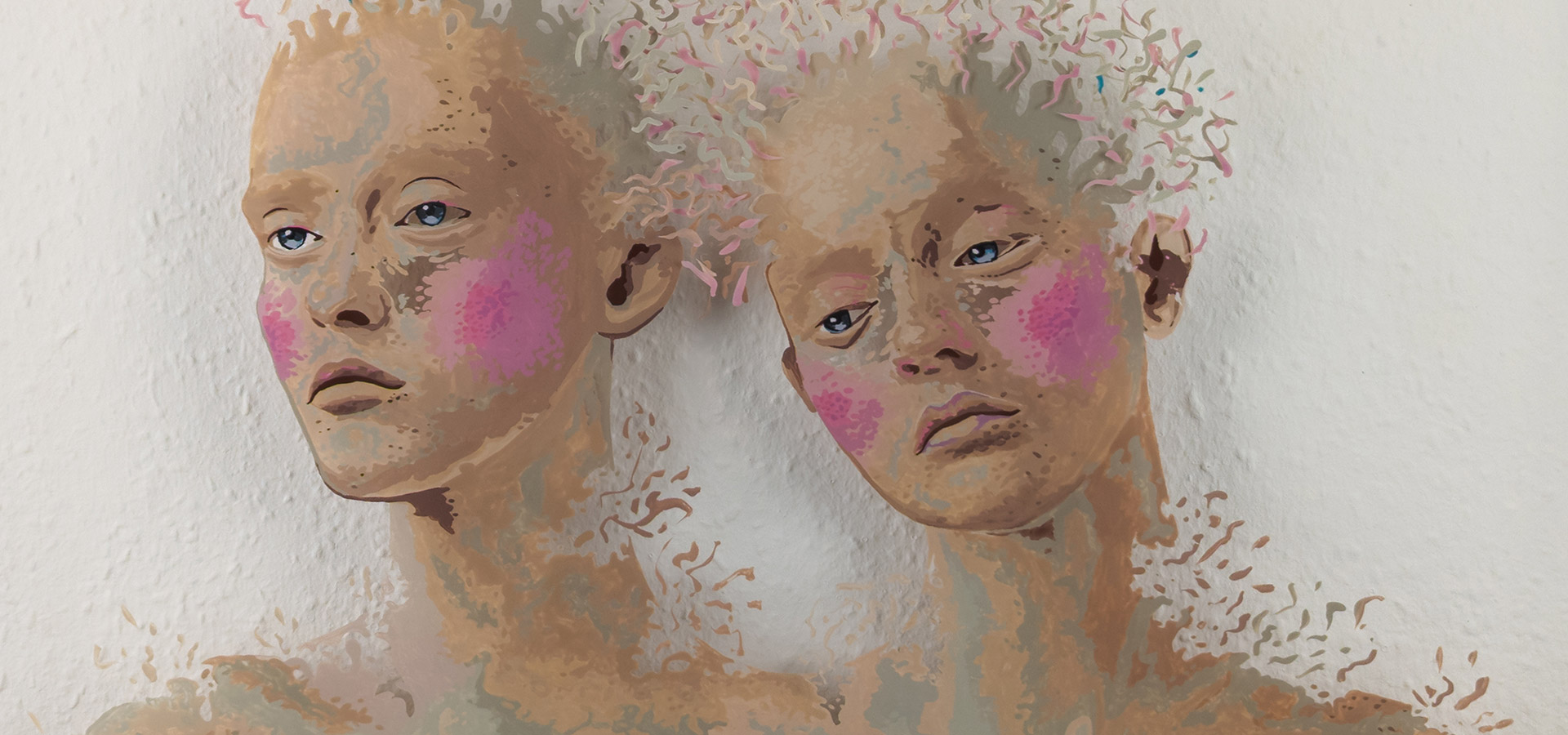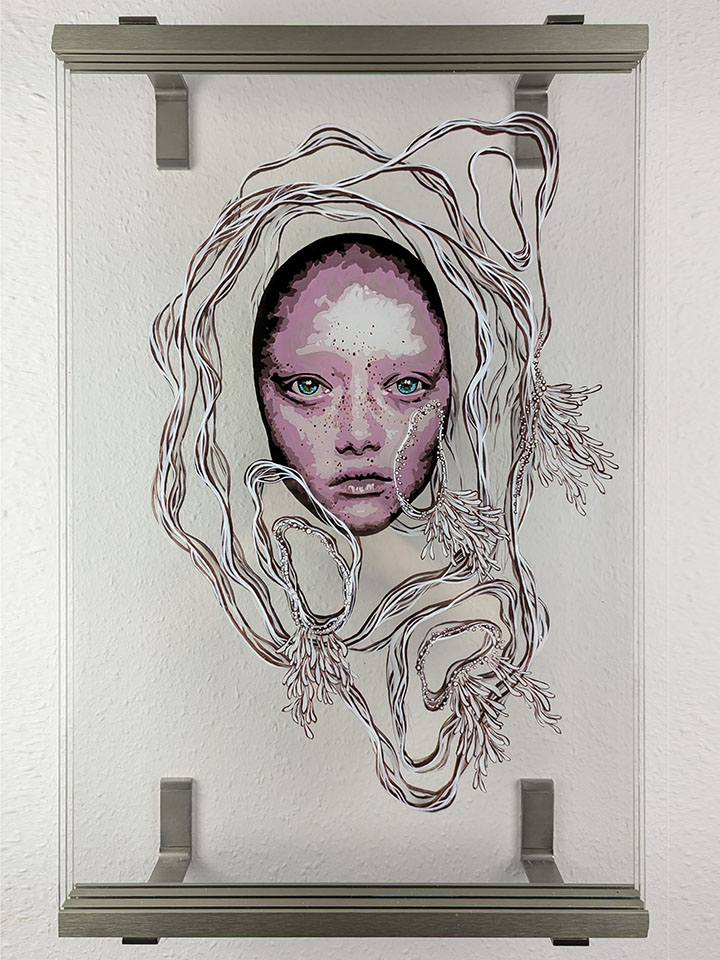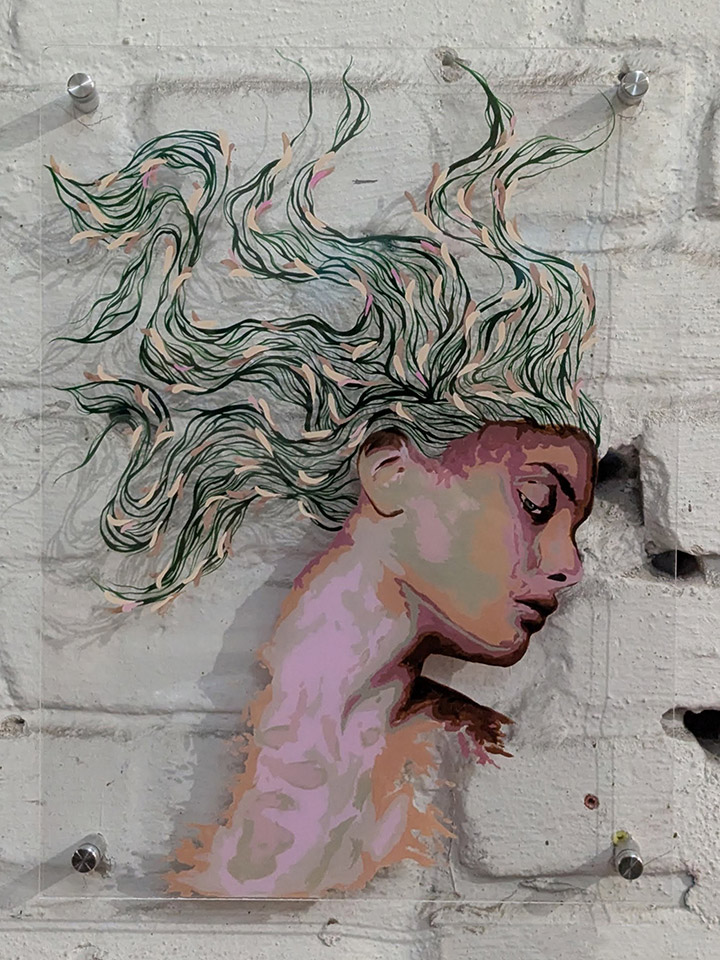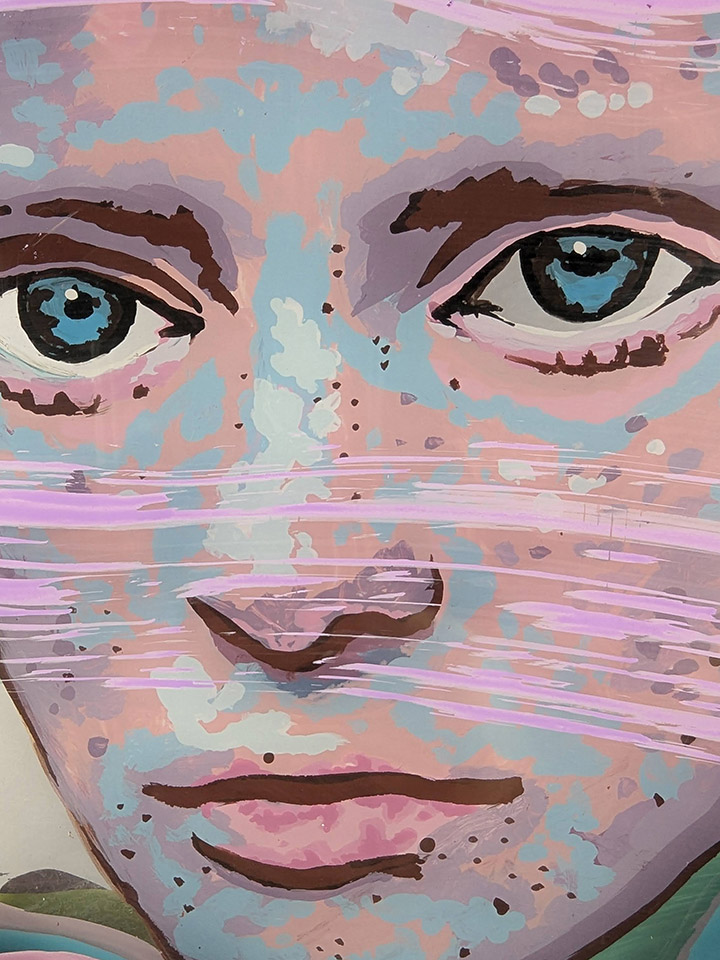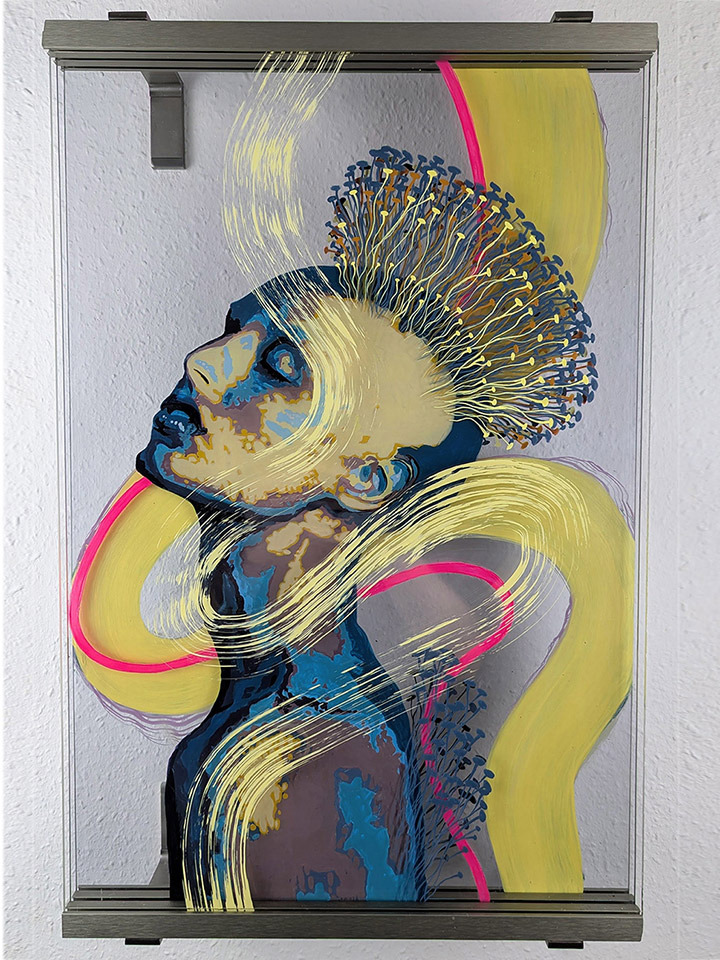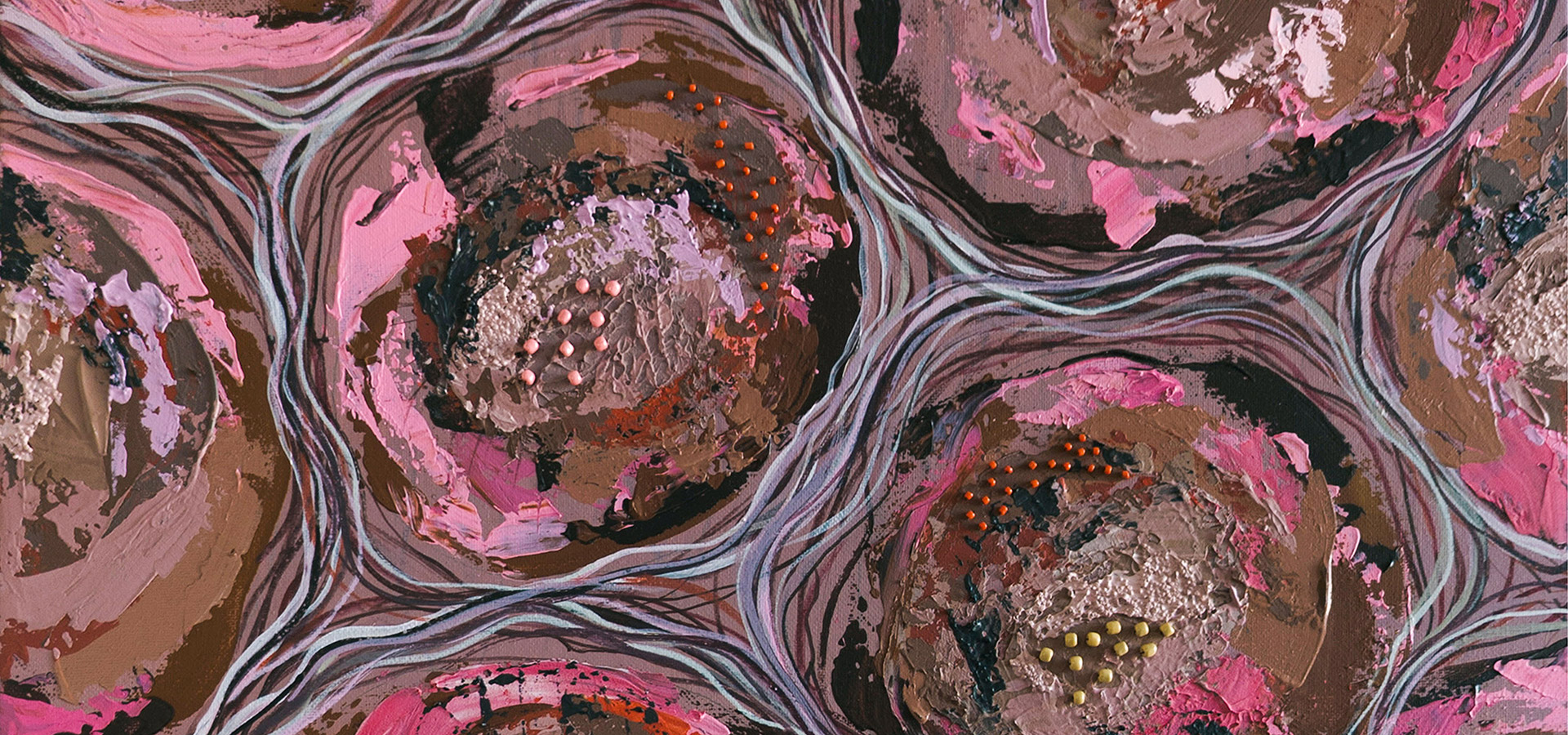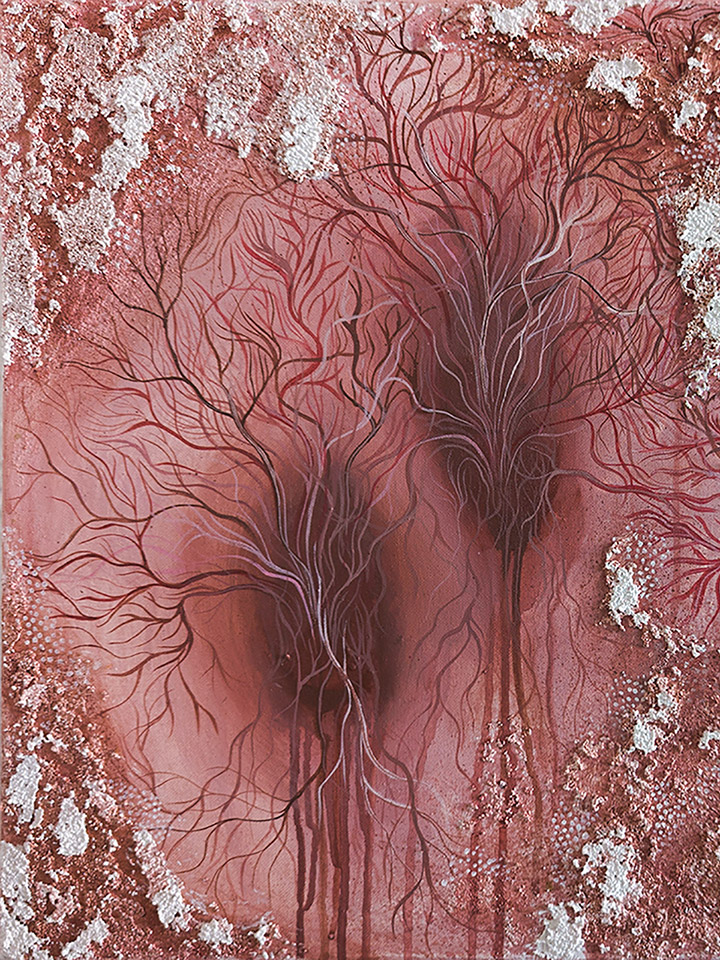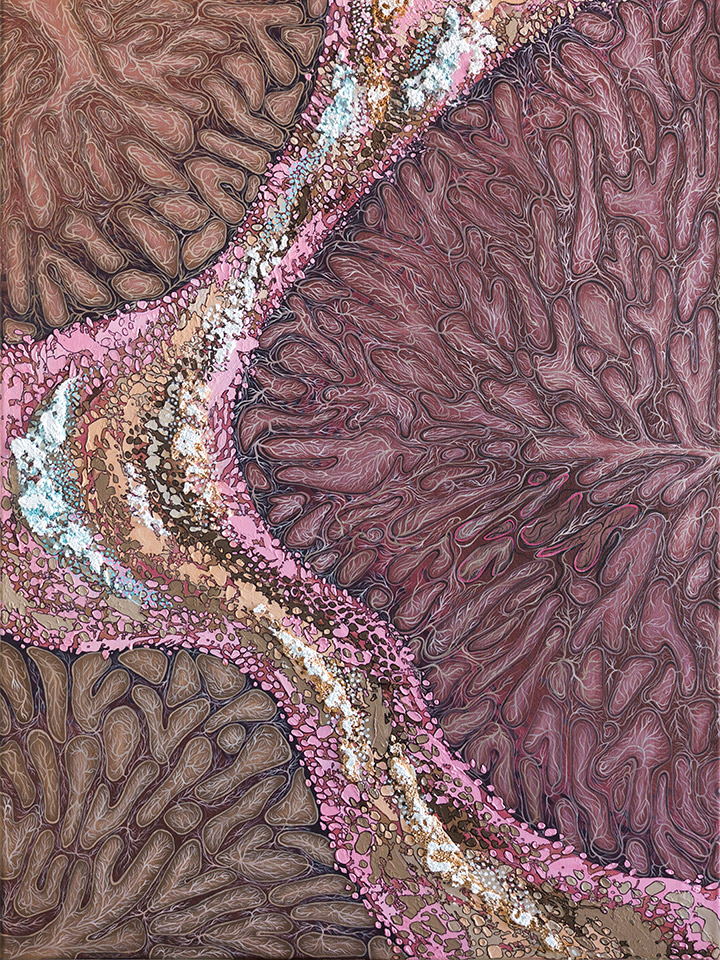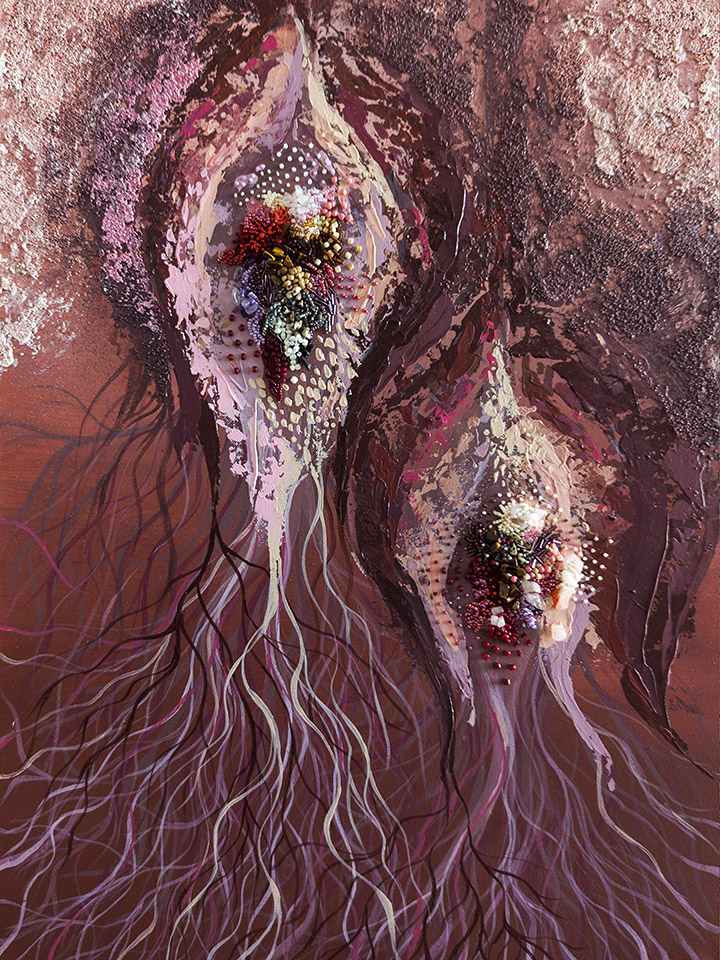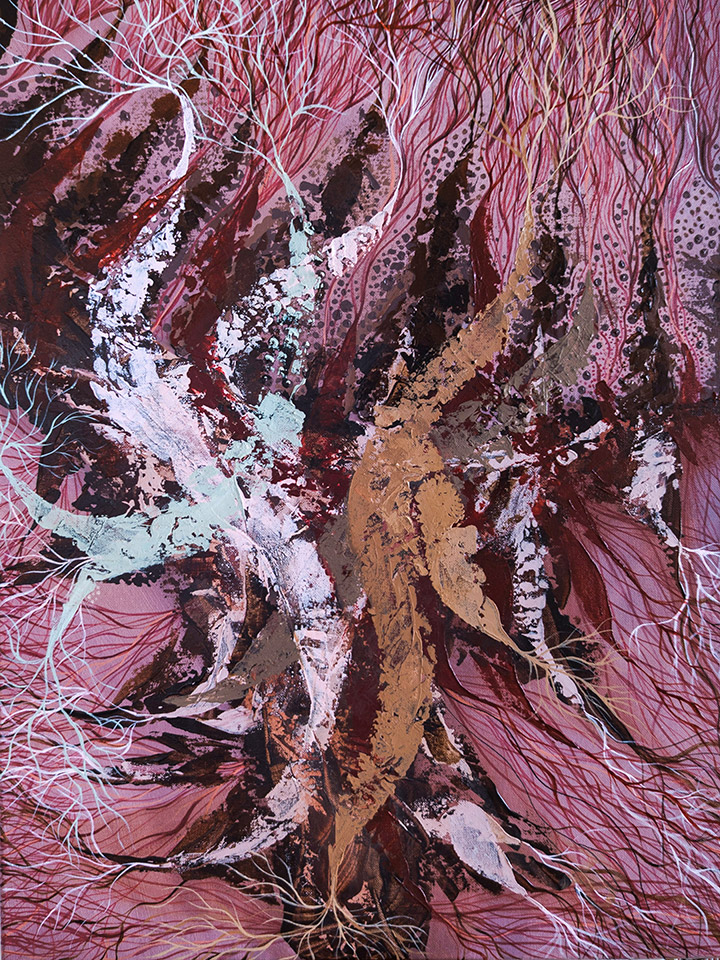Between Softness and Structure
2025, Solo exhibition at Lite Haus Gallery, Berlin
This body of work explores the tension between vulnerability and control, and the emotional labor involved in navigating those opposing forces. The collection combines portraits and abstract forms, using unstretched canvas and textile elements to create a visual language of fragility, repetition, and quiet resistance.
The title refers to the psychological balancing act of maintaining softness: emotional openness, sensitivity, and intuition, while also holding structure: boundaries, control, and internal scaffolding. The paintings are hung using domestic references such as drying racks and clothespins, intentionally evoking care work, exposure, and impermanence.
The work includes both stretched and unstretched canvases. During the exhibition’s opening performance, the artist unfolded and clipped paintings live in front of the audience, presenting the act of displaying as part of the emotional and physical labor behind the work.
Materials include acrylic, fabric, thread, and mixed media. Many paintings show visible seams, folds, and physical interventions such as sewing or ripping, emphasizing a process of both construction and repair. The color palette leans toward skin tones, faded reds, neutrals, and washed-out pastels—reminiscent of something that’s been handled.
The collection emerged in response to feedback that labeled earlier work as "soft" or "feminine." At first interpreted as a critique, the artist began to reframe these terms as points of strength. This collection became a site for unpacking those associations: how softness can be structural, and how structure doesn’t always need to be rigid.
